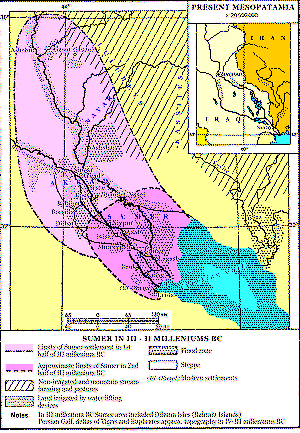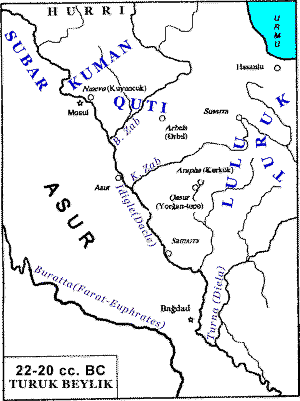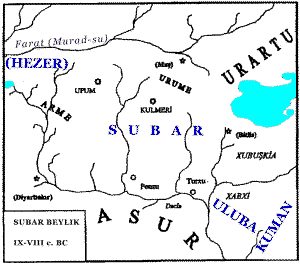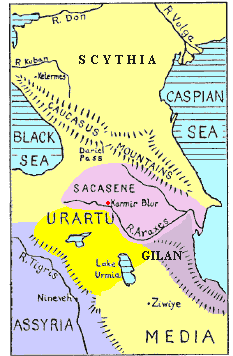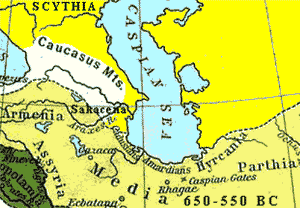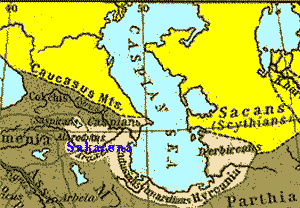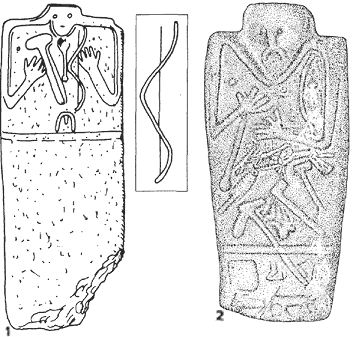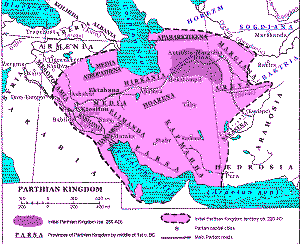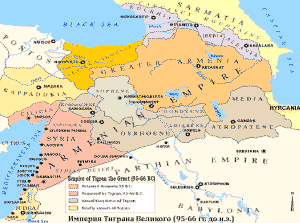| Kurgan Culture Contents | |
|
Why Pazyryk? A look at Kurgans 1. Pazyryk mtDNA Genetics - M.I.Voevoda 2. Pazyryk mtDNA Genetics - I.V.Kulikov Pazyryk Craniology - Tur S.S. |
Pazyryk Timing - L.S. Marsadolov 14C Euroasian Timing 3,000 BC-50 AD - A.Yu.Alekseev et. al. Modern Türks of Pazyryk Descend - Tur S.S. |

From Arran to Altai
© Copyright: Qahraman Gumbatov, 2012, Publication certificate No 21205010724
Links
http://www.proza.ru/avtor/qahraman
Posting Foreword
Here comes another tidbit on the Siberian Scythians, little noted outside of the special literature, but known from the 1960s: the dye for the Türkic carpets was coming from the Arran, which was a part of the Scythian Sacasene in the S.Caucasus. Scythians and Türkic people were making wool carpets, and one of their dyes was coming from the S.Caucasus. And what about Ossetians, are they known for their wool carpets dyed red?
The Türkic history in the Caucasus did not start with Cimmerians and Scythians at about 9th c. BC, it started in the 3rd millennium BC with the horse husbandry tribes north and east of the sedentary agricultural states in Mesopotamia and along the southern coast of the Caspian Sea. The Sumerian and Assyrian records list the names of those tribes at about 20th-23rd cc. BC: Kuman, Lulu, Quti, Turuk, and Subar. 15 centuries later, Kuman, Lulu/Uluba, and Subar are still there. In the 9th c. BC to their number joined Cimmerians and Scythians. Another 5 centuries later, we get a peek at the Caspian shores more to the northeast, from west to east are recorded Gelon, Yiyrk and Dahae. That was the end of the early historical period when the information was too spotty for a sustained picture, and a beginning of more informative descriptions. The initial scene is decorated with animal husbandry nomadic tribes with similar economies, the origin of which is fairly well known only for the Scythians: they brought their Kurgan culture from the Altai highlands. The Dahae and Yiyrk tribes are likely one and the same, since Yiyrk is nothing more than a generic “nomad” in Türkic, their later names were Tokhars, Yuezhi, Dügers, Digors, and Tuhsi, their western territory was called Hyrcania, in the 200 BC their eastern tribesman kins were expelled from the Ordos-Tarim basin, from the Jeti-su they were expelled in 176 BC, they regrouped in their ancestor center between the Aral and Caspian seas, and went on to capture Bactria at about 140 BC, along with the Ash-guzai Scythians known as Ases and Subars recorded as Subaroi. Another part of the Dahae Tokhars took over control of the Seleucid state (future Persia), which for the next 22 centuries inherited their name Parthia, a derivative of their tribal name Pardy (labialized Bardy). A branch of the Ash-guzai Scythians in 620 BC established a state Sacasene within the future Greater Armenia, they probably belonged to the same stem as the Ases in the As-Tokhar confederation. Since the endonym of the Ash-guzai Scythians was As-eri, they immortalized their name as the people of Azeri. The fate of Sacasene Azeris was inseparable form the fate of Armenia, soon it fell under Semitic Achaemenid control (550–330 BC), then the Greek Seleucid control (330–247 BC), then it reverted back under Parthian control (247 BC – 224 AD), and finally, déjà vu with their kins Gilans and Sarmats, the last were brought over by Iberians in 35 BC for Ibero-Parthian war, possibly first as mercenaries (Tacitus, Annals 6.33: N.Pontic Sarmats; J.Flavius, 94 AD, Antiquities of the Jews 18.97: N.Pontic Scythians). The timing of the Gilan's arrival to Hyrcania is not known, in the Herodotus time they were in the N.Pontic, but that does not exclude their prior or simultaneous presence in the Hyrcania area. By 150 AD to the SW corner of the Caspian Sea migrate the Huns, later instead of the generic Huns is named the Hunnic “old” maternal tribe of Kayı, the Hailandurs of the Armenian chroniclers. That coincides with the first mentioning of Caucasian Aghuania, the Aghuania of the Armenian chroniclers and Albania of the Greek and Latin authors. The last antique players to the scene come the Savirs, who in the 5th. c. arrive from the north, and in 7th c. take over control over the Aghuanians, Masguts, and Kayı Huns, but leave the Azeris of Sacasene, and Gilans of Hyrcania to the expanding Arabs. In the north of the Caucasus range we know Bulgars, Masguts under a name of Alans, and Bulgar kins Khazars. No wonder, these tribes brought along all the admixtures collected during their individual histories; what is common to them all is the Kurgan Culture, predominant blood group B (III in the Russian nomenclature), and the negative rhesus factor: B-.
It is clear that the name kermes is a much later loanword from the Persian kerme = red, the red dye industry in the S.Caucasus is much older than the arrival of the Indo-Arians to the Near East. Türkic languages have a slew of terms for the color red: al, atash, bayin, qïzïl, qïzqïl, quba, yepin, yepkil, yepkin, yepün, and probably some more that escaped attention of the OTD's (Old Türkic Dictionary) compilers, and the original name of the color could have been derived from another word, like a bag or a caterpillar, etc. What is remarkable is that the Altai Scythians, who brought their Kurgan tradition to the Altai in the 3rd millennium BC, somehow brought along the valuable dye produced in the Biblical Edem long before the Scythians known under a local name As-guzes established their principality Sacasene in exactly the same area where the oak scale insect industry has grown up. Also remarkably, the ancestors of the As-guzai Scythians from the same area and at about the same time brought to the Altai from the S.Caucasus the technology of cast bronze axes marked with unique design of the tubular socket joint. That type of joint could not have arisen from the Neolithic technology, it is an invention of the metalworking. Not only the northern Mesopotamian technology reached Altai, it extended eastward almost to the Pacific Ocean. And in the Mesopotamia, the technology of the copper and bronze production has a distinct return address: it is called by the name of its practitioners Subartu, giving a local name to the marvelous innovation of metalworking. The same Subartu that conquered Bactria as Subaroi, and ruled eastern Caucasus as Suvars and Subars. In the name Suvar transpires the Türkic compound suv = water + ar = man, people, i.e. “River people”. It is one of the oldest continuous Türkic ethnonyms, by now it is known for 4300 years, and it still lives under the Russified version of Chuvash.
From Arran to Altai
The American scientist E.Shefer writes about the red dye used to color ancient Türkic woolen carpets: “Some medieval Chinese dyes were endowed with fantastic origin, name, or reputation... Red paint, called “blood of gibbon” paradoxically was both mythical and real. Allegedly, that was a blood of an animal called shinshin”. The barbarians Hu (Türks - GG) in the western countries take its blood to dye their woolen carpets, the color is clean, and it does not darken”... Maybe it was the name for the “paint from oak scale insects”, but we can not explain how insect transformed into a mammal... Such English words as crimson and cramoisy (“dark red cloth” )preserved the name of the insect kermes (oak scale insect), which in antiquity, along with the cochineal mealybug, served as a dye.” (21)
The Türkic people always remembered their historical homeland in the South Caucasus, and knew that there still were living related people, and at the first opportunity and poured there.
The known Russian archaeologist M.N.Pogrebova writes that “there is every reason to believe that in the Caucasus the Scythians (Türks - GG) met with ethnically kindred tribes... The Scythians, choosing a path through the eastern Caucasus, have used the long beaten and apparently quite a well-known way.” (190)
The Georgian scientist N.N.Shengeliya quoted a medieval Georgian historian: “Earlier, the Türks in the autumn were coming down from their summer pastures in the mountains with all their phalanges, and then stayed in Gachiani along the banks of the Kura, from Tbilisi to the very Bardawi, and along the Iori and at all those excellent winter encampments, where in winter, like in the springtime, the hay is mowed, and firewood and water are abundant, and all kinds of game is plentiful there, and there are all sorts of other amenities. In those places they staged their wagons. Were countless their horses, mules, sheep, and camels, and they lived at ease, they were hunting, resting, and jolly, and did not have any needs in anything. With the arrival of spring, they began to climb into the mountains for summer pasture... And spring also promised them joy and peace in the beautiful fields and meadows, springs and flowering land, and so great was their strength and number, that even was said: “All the Türks from all sides gathered there.'” (191)
In the “Oguzname” Rashid al-Din writes: “In the summer Oguz set out from the limits of Shirvan and reached Arran and Mugan. The weather was very hot, and because of the heat to remain there was impossible. So, they decided to leave to the mountain summer quarters (yaylak)... That summer Oguz spent in the yaylak in Alatak. From there he sent emissaries toward Baghdad, Georgia, Diyarbakr, and Rakka with a notice that he is coming there... After sending emissaries to those regions, Oguz went towards Arran and Mugan to winter. He chose to dwell (yurts) and for his seat the interfluve of the rivers Kura and Araks, and spent the winter there.” (164)
The renown Soviet historians B.D. Grekov and A.Yu. Yakubowski in the book “The Kipchak Khanate and its fall” write, “Hulagu (a grandson of Chingis Khan, a founder of the Hulaguid dynasty - GG.) valued the exceptional pastures in Azerbaijan. In that respect, for wintering Mongols particularly loved the Mugan steppe in the lower course of Kura, and for summering they valued the mountain slopes covered with marvelous grass in the Karatag.” (192)
The ancient Türks' main economic activity was transhumant cattle pasturing, distinguished by a cultic attitude to the livestock, the main source of their existence. Since the ancient times, they had to think continuously about the livestock growth, expansion of the pastures, and securing safety of their numerous herds. Their main enemies were drought, blizzard, poaching by wild animals (wolves), and epidemics (epizootics), which could in an instant deprive them of tyheir means of existence. Therefore, in choosing new areas for settlement, they tried to choose for their kyshlags (wintering, conventionally spelled kishlaks) the places where they would spend most difficult winter months, select the windless areas with natural barriers (hollows, cliffs, canyons, etc.). The territory of their historical homeland in the South Caucasus in that regard was perfect for transhumant cattle husbandry.
Addendum 1
From the pen of Qahraman Gumbatov, 2012
Place where Siberian Scythians brought their red dye from
The British scientist David Rohl in his book "Genesis of civilization" writes that "The biblical paradise was in the western end of the valley Aji-Chai, near the city of Tabriz. Garden, according to the Bible, was in the Garden of Eden "to the east", being protected from the north, east and south by high mountain ranges Savalan and Sahand. To the west extended a treacherous swampy lowland in the delta of the river Aji Chai at its confluence with the Lake Urmia. So, this is the river described in the Genesis, a river watering the garden of Eden. To the east of the garden stretched a valley, gradually rising to the mountain pass located at the eastern gate of Eden. Behind it, in the basin of Ardabil, lies a land of Nod, a place of Cain's exile. Some villages in that area still preserve in their modern names a vague memory of the ancient biblical place names. Beyond the pass that leads to the south and east to the Nod, and consequently to Eden, stands the town Keruabad, "settlement [of the people] Keru", the name quite possibly is connected with the fearsome winged guards guarding the entrance to the Garden of Eden from the East. The Bible, as we know, calls these guards cherubs (Cherubim i.e. Cherubs). North of the valley, where stands the garden, is the "Mountain of Cush" (Cusheh-Dag), and behind it lays the biblical land of Cush. Through the land of Cush (kush is the ancient Turkic term for the bird - G.G.) flowed a river Gihon, confidently identified with the turbulent Araks, which at the time of Islamic invasion of Persia was called Gaihun".
Genesis, Chapter 2, verses 8-14
8. And the Lord God planted a garden (paradise) in Eden in the east, and placed there a man whom he
created.
9. And the Lord God produced from the ground every tree pleasant to sight and good for food, and in
the middle of the garden (paradise) placed a tree of life, the tree of knowledge of good and evil.
10. Out of Eden flowed river to water the garden (paradise), and it divided into four rivers.
11. The name of the first is Pison (Phison): it flows around the whole land of Havil, where is gold;
12. and the gold of that land is good: there is bdellium (gum) and the stone onyx.
13. The name of the second river is Gihon: it circles whole land of Cush.
14. The name of the third river is Hiddekel (Tigris): it flows in front of Assyria. The fourth river is Euphrates.
Addendum 2
From the pen of Qahraman Gumbatov, 2012
Since Y-DNA Hg R1a1 was found in European populations, for a number of years the R1a1 was proclaimed to be, in order of assertions, “European”, “Indo-Arian”, “Arian”, and finally “Slavic”. In the concept of the population genetics, the present picture is an apotheosis of stability that reflects the genetic picture at the dawn of the “Europeans”, with minor distortions accumulated over long periods. The discovery of the DNA-genealogy smashed the 20-years old paradigm into pieces, demonstrating and timing migrations, tracing migration routs with amazing accuracy in timing, and demonstrating population replacements on a continental scale. It turned out that Y-DNA Hg R1a1 males appeared on the scene in South Siberia/Middle Asia 20,000 ybp, and a sample of them crossed Eurasia and appeared in the Balkans 9,000 ybp; in the following millennia they amalgamated with the Old Europe population, learned farming, and turned from the roaming hunter-gatherers into sedentary farmers. The Y-DNA Hg R1b appeared in the same South Siberia/Middle Asia area 16,000 ybp, starting odysseys of various blends of the R1 haplogroups containing R1a1, R1b, and other parental and filial derivatives of R1 Hg. The DNA-genealogy allowed to trace the appearance of the Hg R1b west of the Urals 6,800 ybp. The post-6,000 migrants are tentatively associated with the Kurgan archaeological cultures, with intensive animal husbandry and barely developed agriculture. From the Eastern Europe they also migrated to the Caucasus around 6000 ybp, to Asia Minor around 6000 ybp, and to the Middle East 6000-5500 ybp, further west to Europe via northern route entering Europe around 4500 ybp, to the Balkans via a southern route entering Europe around 4500 ybp, along North Africa and the Mediterranean Sea (5500-5000 ybp) via Egypt to the Atlantic, and north to Iberia arriving to the Pyrenees 4800 ybp via North African route.
The following compressed listing of the Türkic modern nations and ethnic groups demonstrates that neither “European”, nor “Indo-Arian”, nor “Arian”, nor “Slavic” people hold a patent on the R1a1 Hg, its distribution makes it Eurasian Hg, and probably by the 9,000 ybp a much larger proportion of the R1a1 papas remained in the South Siberia/Middle Asia area than the fraction that reached Balkans. The Türkic groups with highest proportion of the R1a1 Hg tend to radiate from, and remain in the vicinity of the South Siberia/Middle Asia.
The author's listing contained the first two columns. The added columns shown in blue provide somewhat speculative and assumptive allocations with unequal degree of confidence. The case of nomadic people starkly differs from the case of the farming people, in that the compositions of the nomadic people are much more fluid, and most of the modern nations-states are conglomerates of distinct peoples with distinct histories that underwent numerous short- and long-distance admixtures even in the course of the historical period. The modern nations-states are conglomerates of blends of the blends of numerous orders, and for example the nation-state Uzbek is only partially correlated with the ethnos Uzbek, and the ethnos Uzbek in turn is only partially correlated with the ethnos Karluk, while both Uzbeks and Uigurs (and Alats too) carry the legacy of the Tele confederation that included nine (Tokuz-Oguz/nine tribes) Uigur and ten (On-ok/ten-arrow) Karluk tribes. The ethnic Uzbeks are divided between Uzbekistan and Afganistan, and the Uzbekistan Uzbeks include plenty of Kazakhs and Kipchaks. However, these details do not obscure the overall picture of the Hg R1a1 Eurasian distribution.
“Arian”, “Indo-Arian”, “European”, or “Slavic” R1a1 and Türkic R1a1
| Sample | R1a1 % | Present | Tentative Provenance | Provenance | Provenance Branch |
|---|---|---|---|---|---|
| Cotons (Uigurs Mongolia) | 82.0 | C.Asia | Karluks | SE.Middle Asia | Ogur |
| Kirgizes | 63.0 | E.Middle Asia | Enisei Kirgizes | Siberians | Oguz |
| Shors | 58.8 | Siberians | |||
| Altaians | 53.0 | Siberia | Tele/Kipchaks | Siberians | Oguz |
| Tatars | 34.1 | European | Sarmats | European | Ogur |
| Chuvashes | 31.6 | European | Sarmats | European | Distinct |
| Uzbeks | 30.0 | Middle Asia | Karluks | SE.Middle Asia | Ogur |
| Uigurs | 28.6 | C.Asia | Karluks | SE.Middle Asia | Ogur |
| Khakas | 28.3 | Siberians | Enisei Kirgizes | Siberians | Oguz |
| Karachais | 27.54 | European | Sarmats/Tokhars | W.Middle Asia | Ogur |
| Bashkirs | 26.3 | W.Siberia | Sarmats | W.Siberians | Ogur |
| Balkars | 25.74 | European | Sarmats/Ases | E.Middle Asia | Ogur |
| Karakalpaks | 18.2 | W.Middle Asia | Sarmats | European | Oguz |
| Tuvins | 14, 0 | Siberia | Tele | Siberians | Oguz |
| Kumyks | 13.2 | European | Sarmats | W.Middle Asia | Ogur |
| Gagauzes | 12.5 | European | E.Middle Asia | E.Middle Asia | Oguz |
| Azeri | 7.0 | European | W.Middle Asia | Mesopotamia | Ogur |
| Turks | 6.9 | Near East | Saka | C.Asia | Oguz |
| Turkmens | 6.7 | W.Middle Asia | Saka | C.Asia | Oguz |
| Kazakhs | 4.0 | Middle Asia | Usuns, Kangars, Mong. | E.Middle Asia | Oguz |
| Yakuts | 3.2 | Siberia | Saka | Middle Asia | Oguz |
